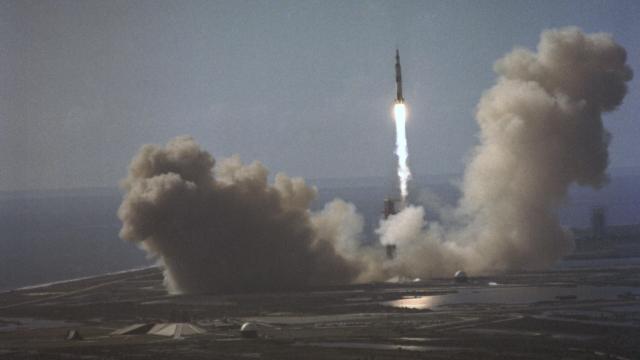“We choose to go to the Moon in this decade and do the other things, not because they are easy, but because they are hard,” President John Kennedy said famously in a 1962 speech. A bold goal, and a goal that required NASA to develop a rocket capable of the task.
That rocket would be known as the Saturn V, a three-stage rocket that, until the space shuttle era, was the most powerful launch vehicle to successfully take flight. The Saturn V supported the first and only crewed flights to the Moon, and later contributed to the construction of Skylab — the first U.S. space station.
Its legacy is considerable. In 2023, NASA is ready to take its next giant leap into deep space with its newly minted Space Launch System (SLS) rocket. The Artemis generation stands on those powerful Apollo shoulders, but without Saturn V, none of NASA’s great accomplishments of the 1960s and 1970s would have been possible.
Saturn V cutaway

Above is a cutaway illustration showing the Saturn V launch vehicle and its major components.
Rockets to scale
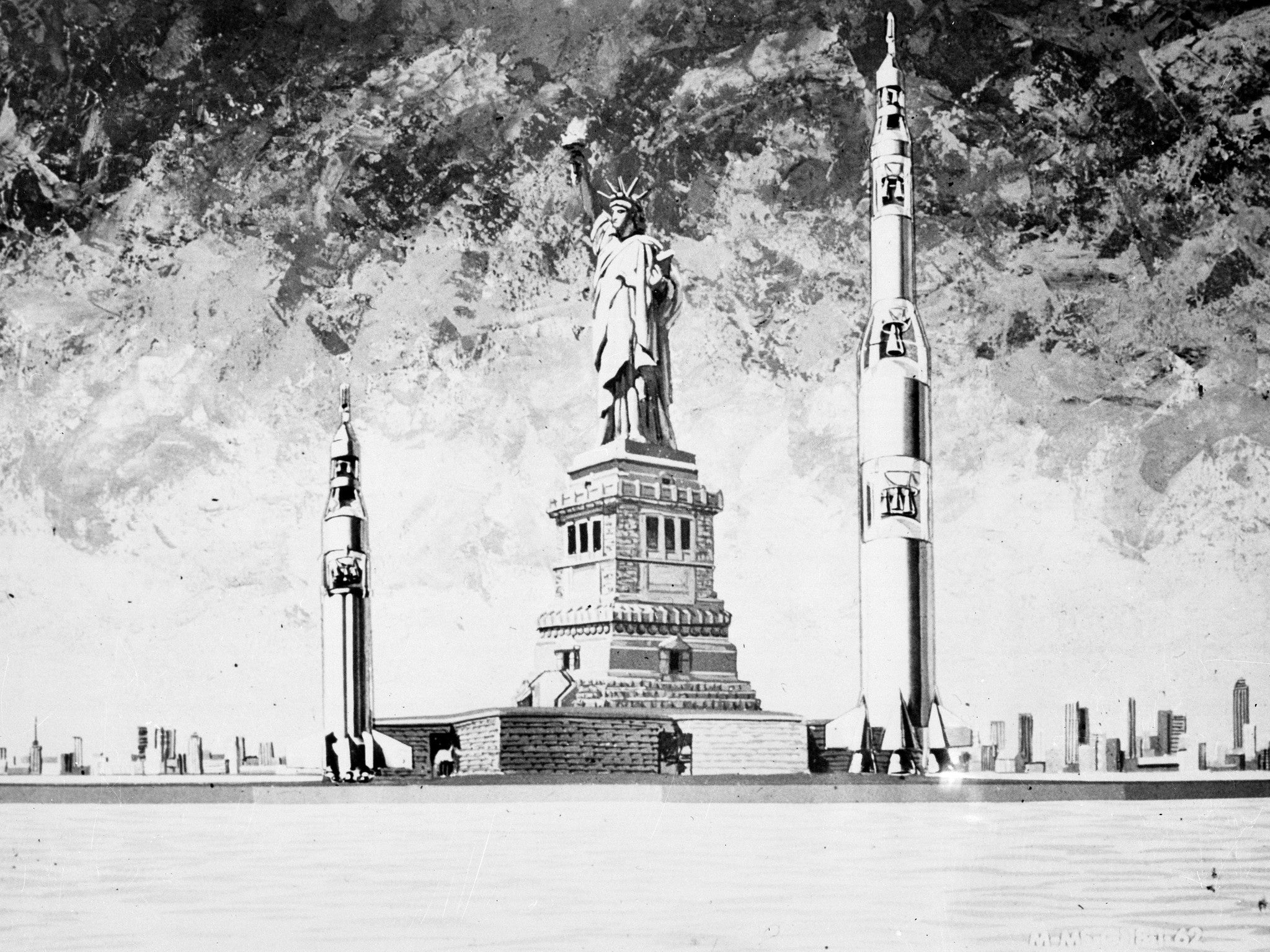
An old NASA illustration shows the size comparison of the Statue of Liberty to the Saturn I (left) and Saturn V (right). The space agency developed three Saturn-type rockets in the 1960s, of which the Saturn I and Saturn IB launched payloads and astronauts to Earth orbit, and the Saturn V launched crewed spacecraft to the Moon. At 110.64 m tall (111 meters), Saturn V was roughly the height of a 36-story building and 60 feet (18 meters) taller than the Statue of Liberty.
Building the test stand
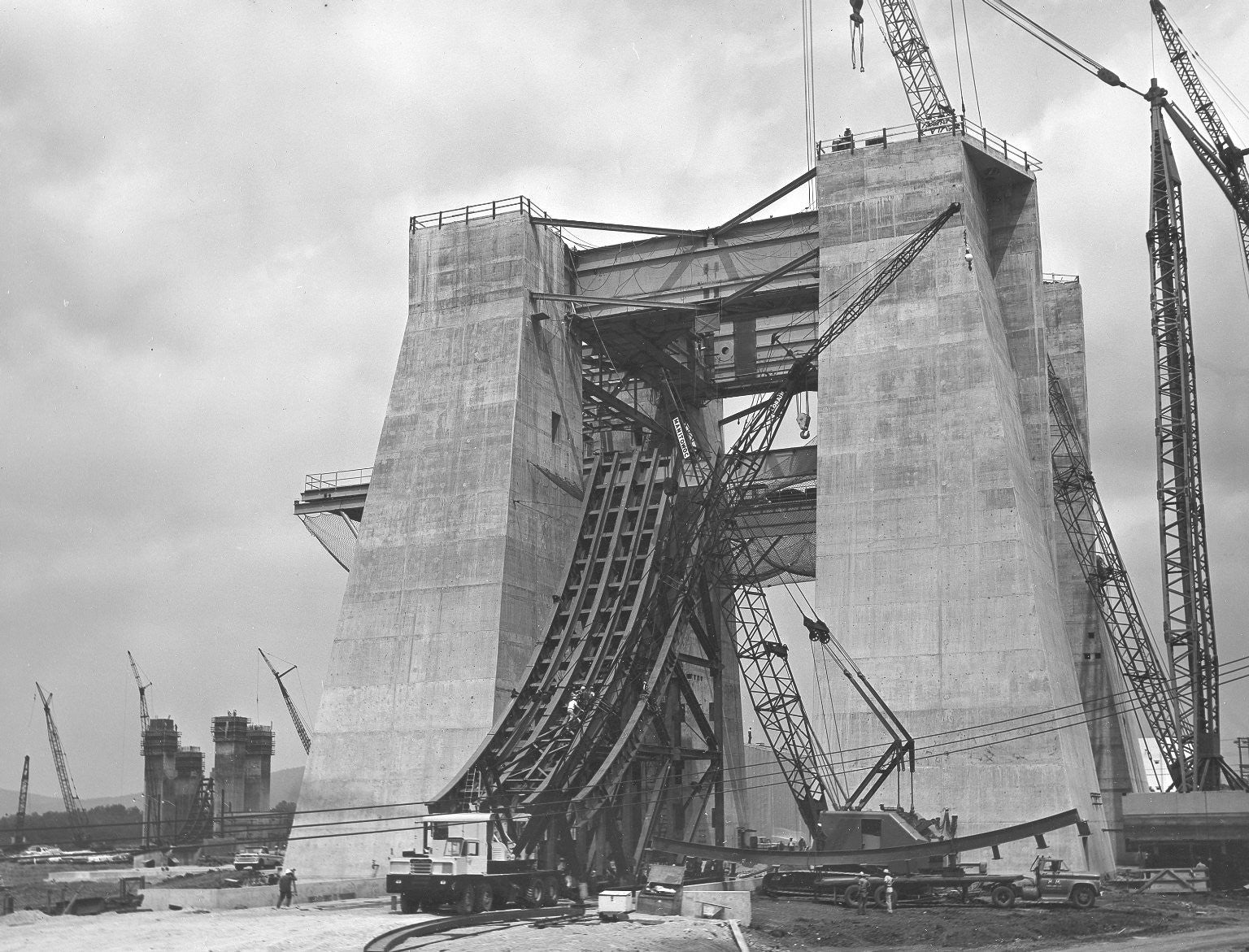
Big rockets need big test stands. Realising this, NASA began construction of the gigantic S-IC Static Test Stand Complex in 1961 at the agency’s Marshall Space Flight Centre in Alabama. The stand was designed to test the 42.06 m-long Saturn V S-IC booster stage and hold it hold it firmly in place during static fire tests, during which the booster produced 7.5 million pounds of thrust with its five F-1 engines. Completed in 1964, the stand was built from 12 million pounds of cement and anchored to bedrock at a depth of 40 feet (12 meters) below ground level. The photo above was taken on September 5, 1963.
Construction of the pump house
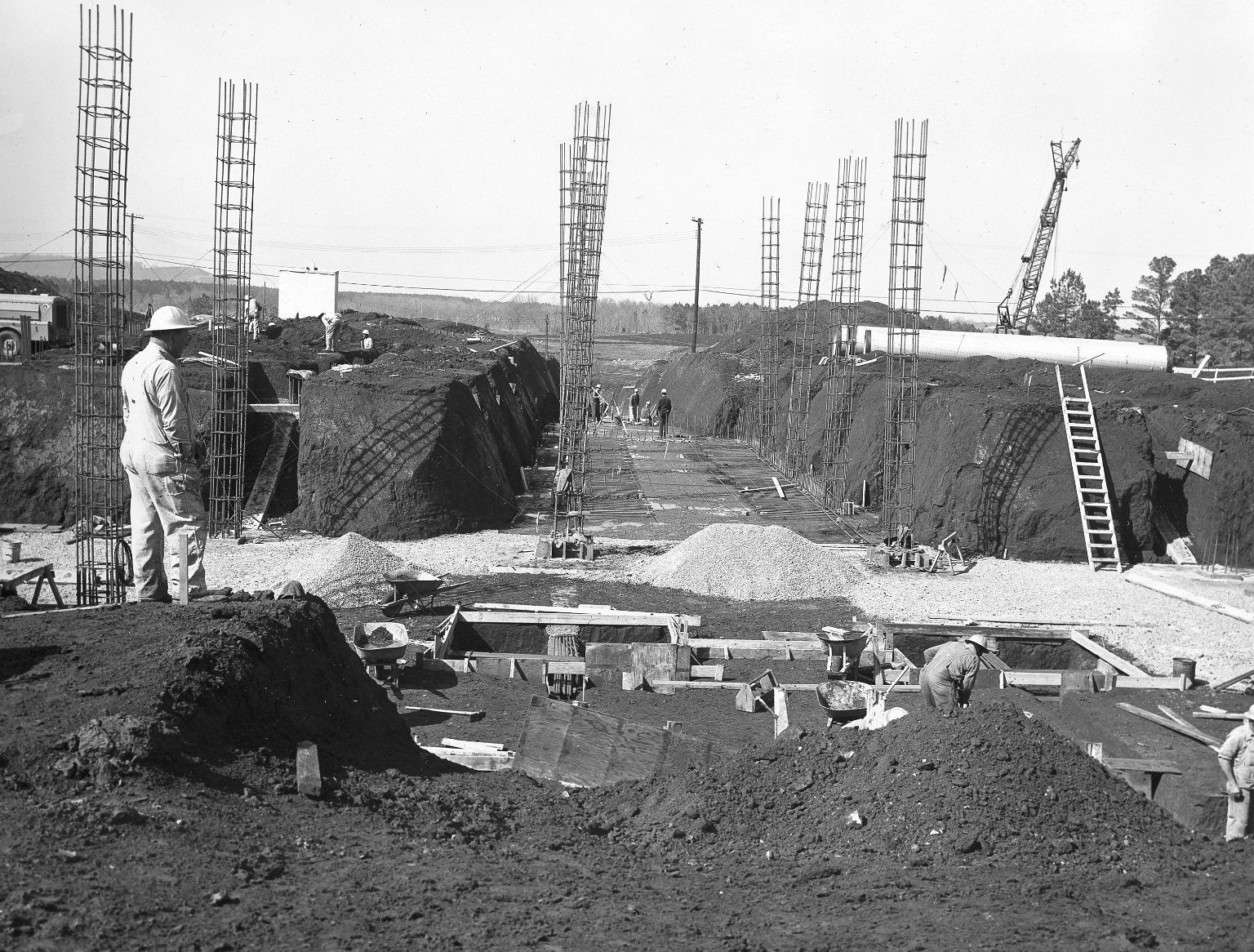
Also at Marshall Space Flight Centre was the Block House control centre and Pump House, the latter in support of the test facility’s deluge system. The Pump House delivered water to the test stand to prevent damage during static fire tests, spraying water through small holes at a rate of 1,211,331 l per minute. The photo above was taken on March 20, 1962.
First stage assembly

This photo, captured on October 1, 1968, shows three Saturn boosters in development at the Michoud Assembly Facility (MAF) in New Orleans, Louisiana. The stages, designated S-1C-10, S-1C-11, and S-1C-9, were being fitted with five F-1 engines at the time. NASA used its Saturn Vs — each capable of exerting 34.5 million newtons of thrust — to launch the Apollo missions to the Moon and deposit the Skylab space station in low Earth orbit. The heavy lift vehicle performed its debut flight during Apollo 4, lifting off on November 9, 1967.
Static fire
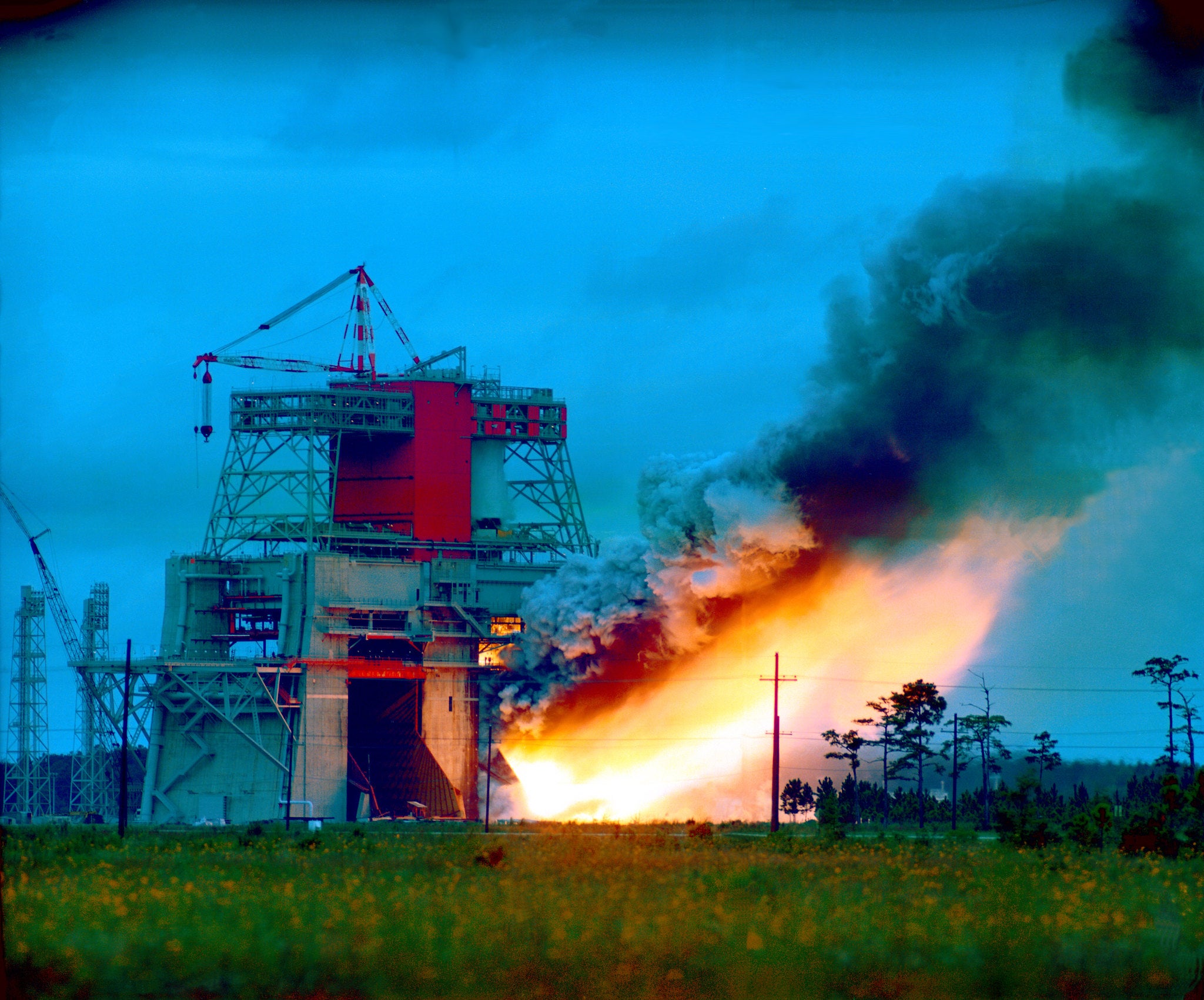
Boeing built the first stage at NASA’s Michoud facility, but tests were done at Marshall Space Flight Centre. The image here, taken at some point in 1967, shows smoke and flame exiting the S-IC stand during a static fire test of the booster. Together, the five first stage engines were capable of lifting the Saturn V vehicle to a height of 42 miles (68 kilometers) and at speeds reaching 9,656 km per hour (9,660 km/hr).
Second stage gets a lift
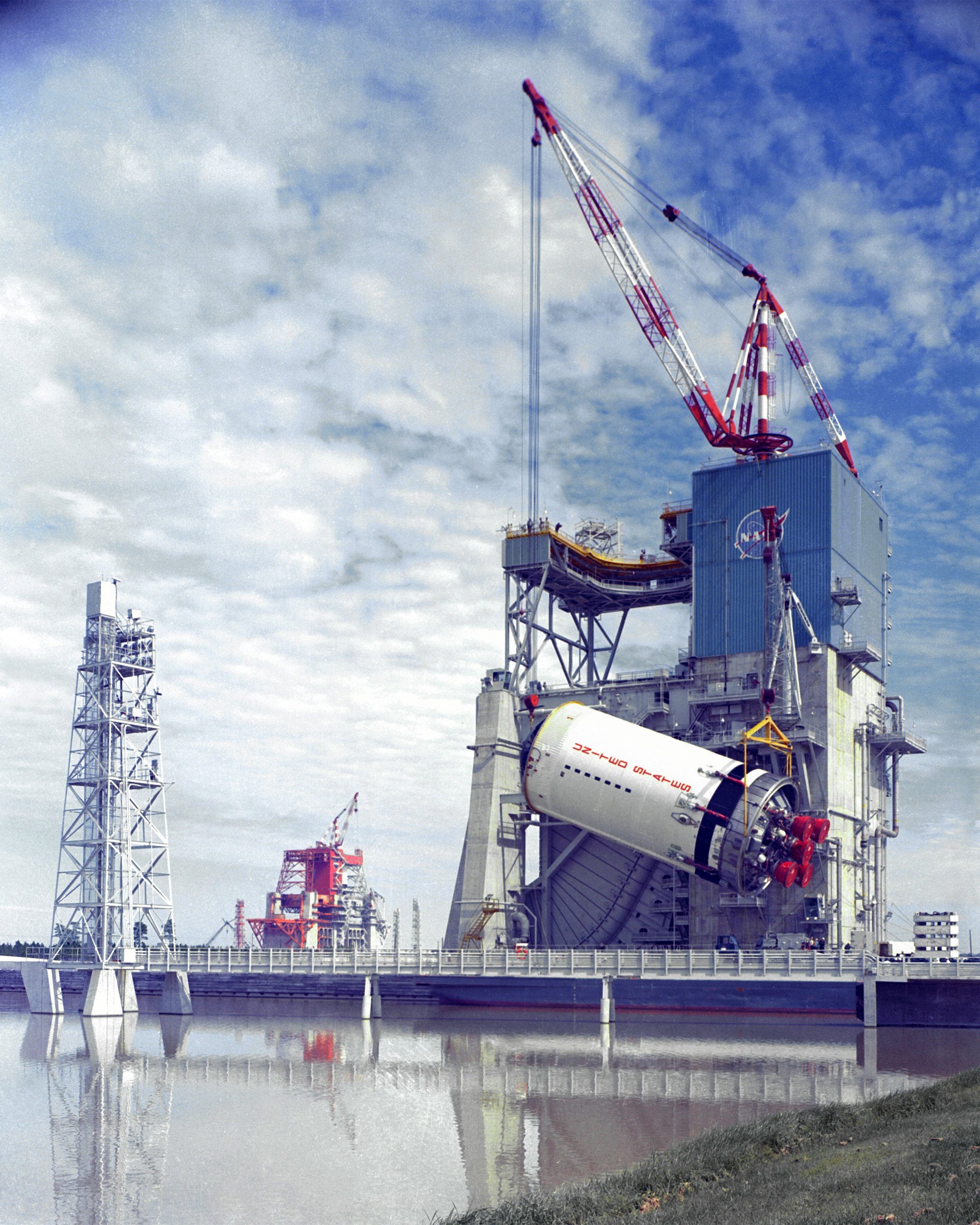
This image, taken in 1967, shows the rocket’s second stage, known as S-II, being lifted onto the A-2 test stand at NASA’s Mississippi facility, now known as the Stennis Space Centre. During launch, the second stage kicked in once the first stage got discarded (first stages fell into the Atlantic Ocean), burning its five J-2 engines for roughly six minutes and taking the vehicle and payload to heights reaching 115 miles (185 km). Rockwell International Corporation built the S-IIs, which ran on a mixture of liquid hydrogen and liquid oxygen.
First stage gets a lift
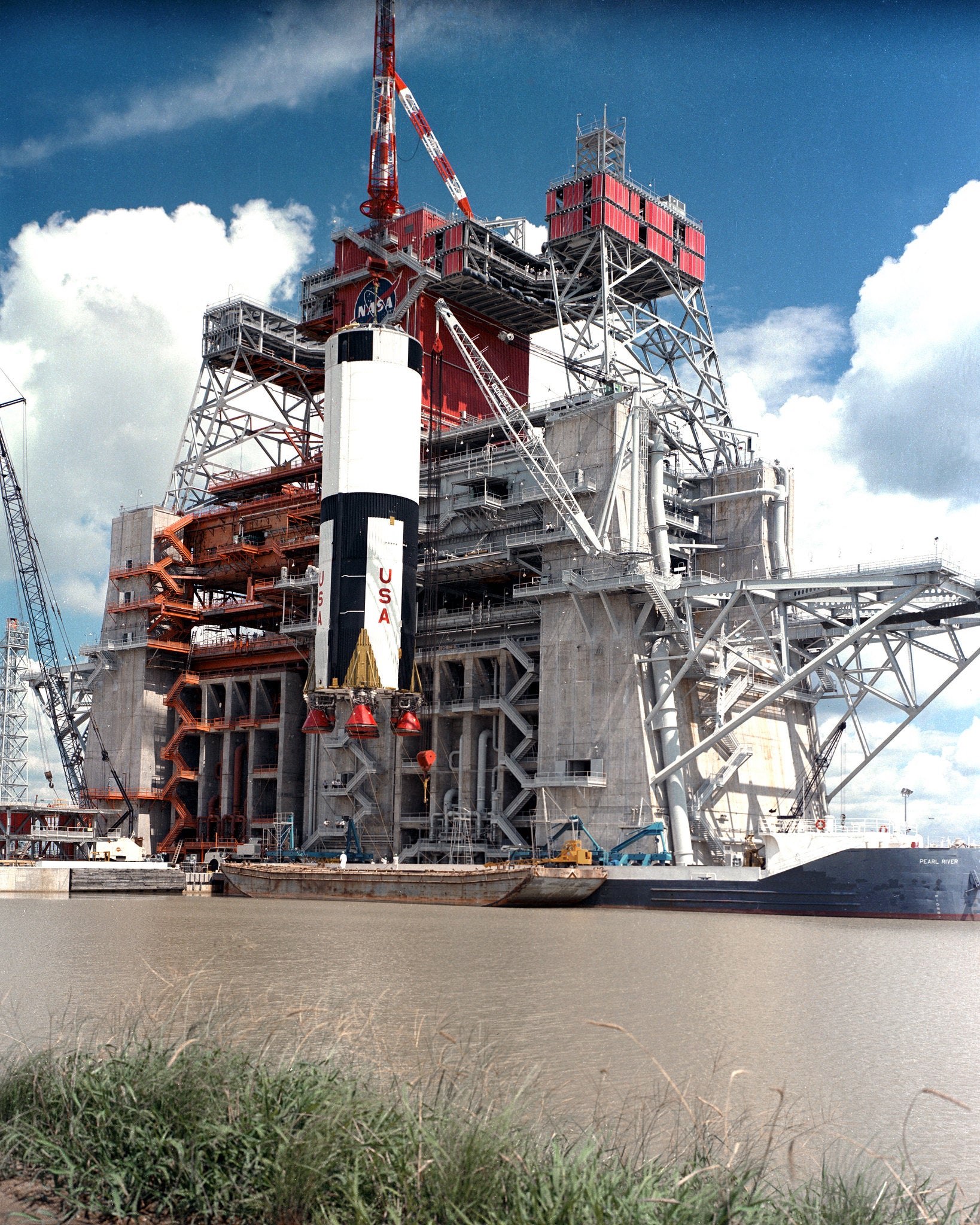
Also taken at Stennis in 1967, this image shows the Saturn V first stage being hoisted onto the B-2 test stand. The first stage ran on 769,952 l of kerosene and liquid oxygen, the latter enabling combustion.
Apollo 8 rocket
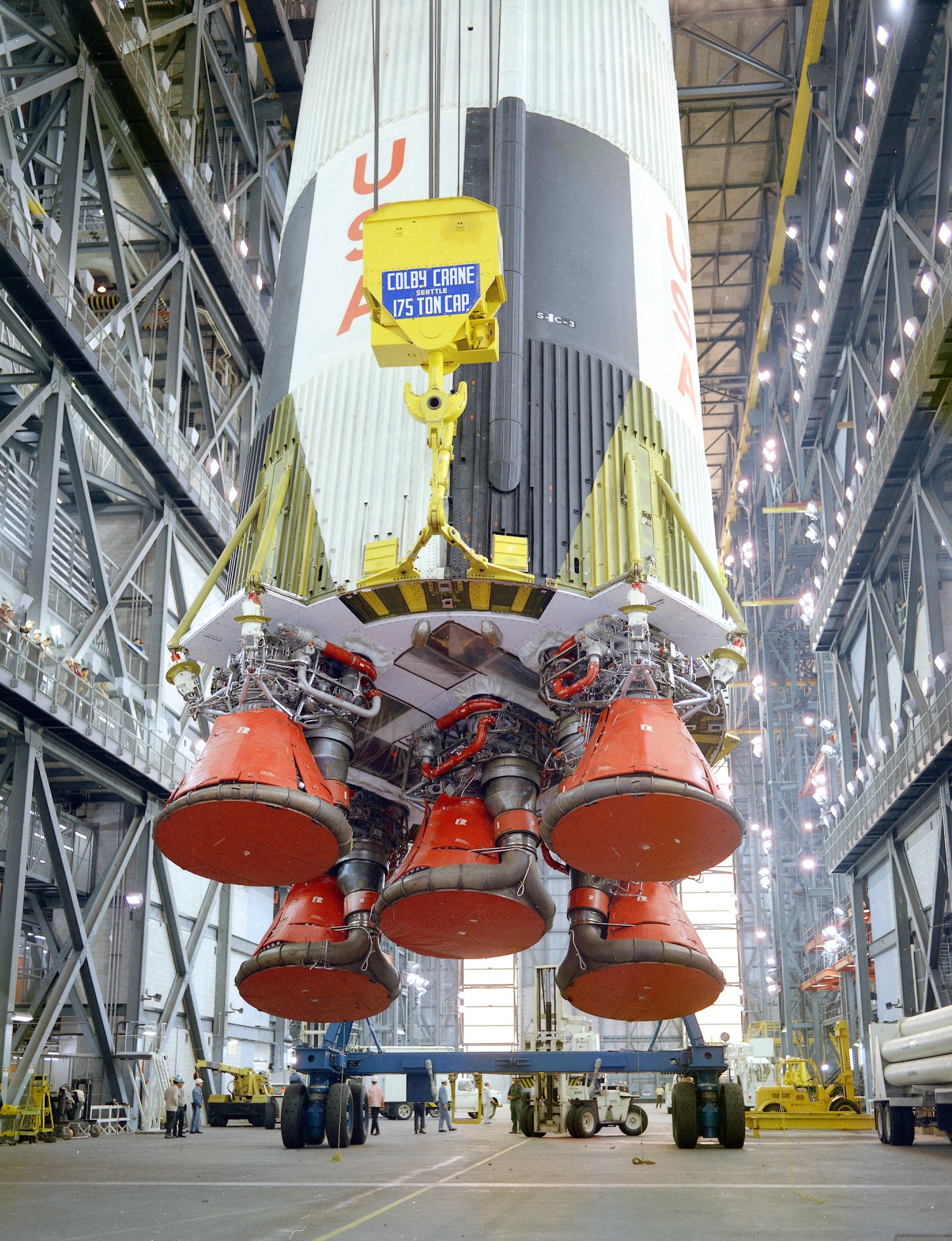
This 1968 image shows the bottom section of the Saturn V rocket at Kennedy Space Centre in Florida. This rocket was used for Apollo 8, the first crewed mission beyond Earth orbit. Apollo 8 launched on December 21, 1968, sending NASA astronauts Frank Borman, James Lovell, and William Anders on their historic journey around the Moon and back. NASA’s upcoming Artemis 2 mission — a crewed mission that won’t happen any earlier than late 2024 — will serve the same purpose, as NASA iteratively works toward Artemis 3: the first crewed lunar landings since the Apollo era.
The Apollo Command/Service Module
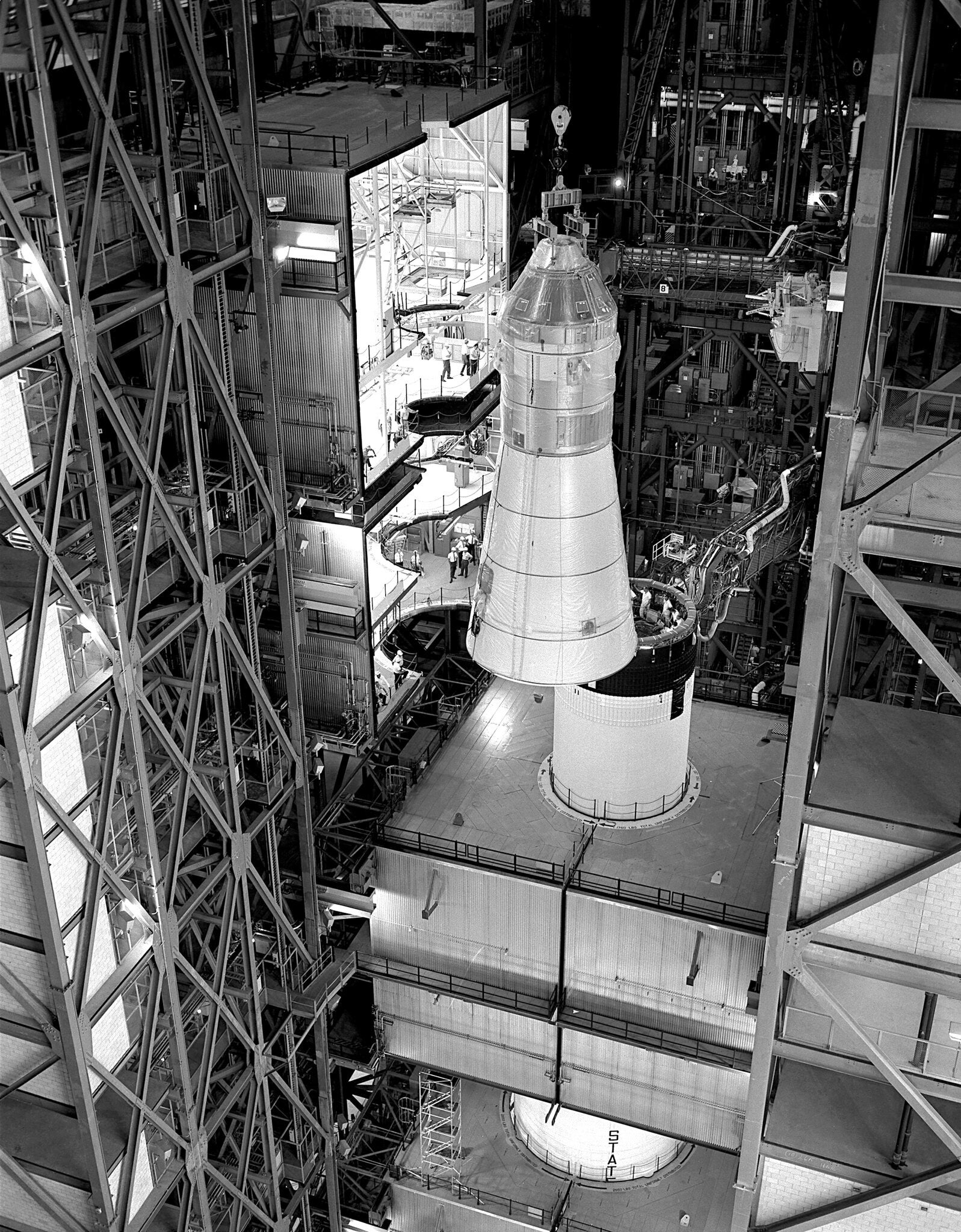
This striking image, taken on October 7, 1968, shows ground crews installing the Apollo Command/Service Module atop the three-stage Saturn V rocket inside NASA’s Vehicle Assembly Building.
Ready to go
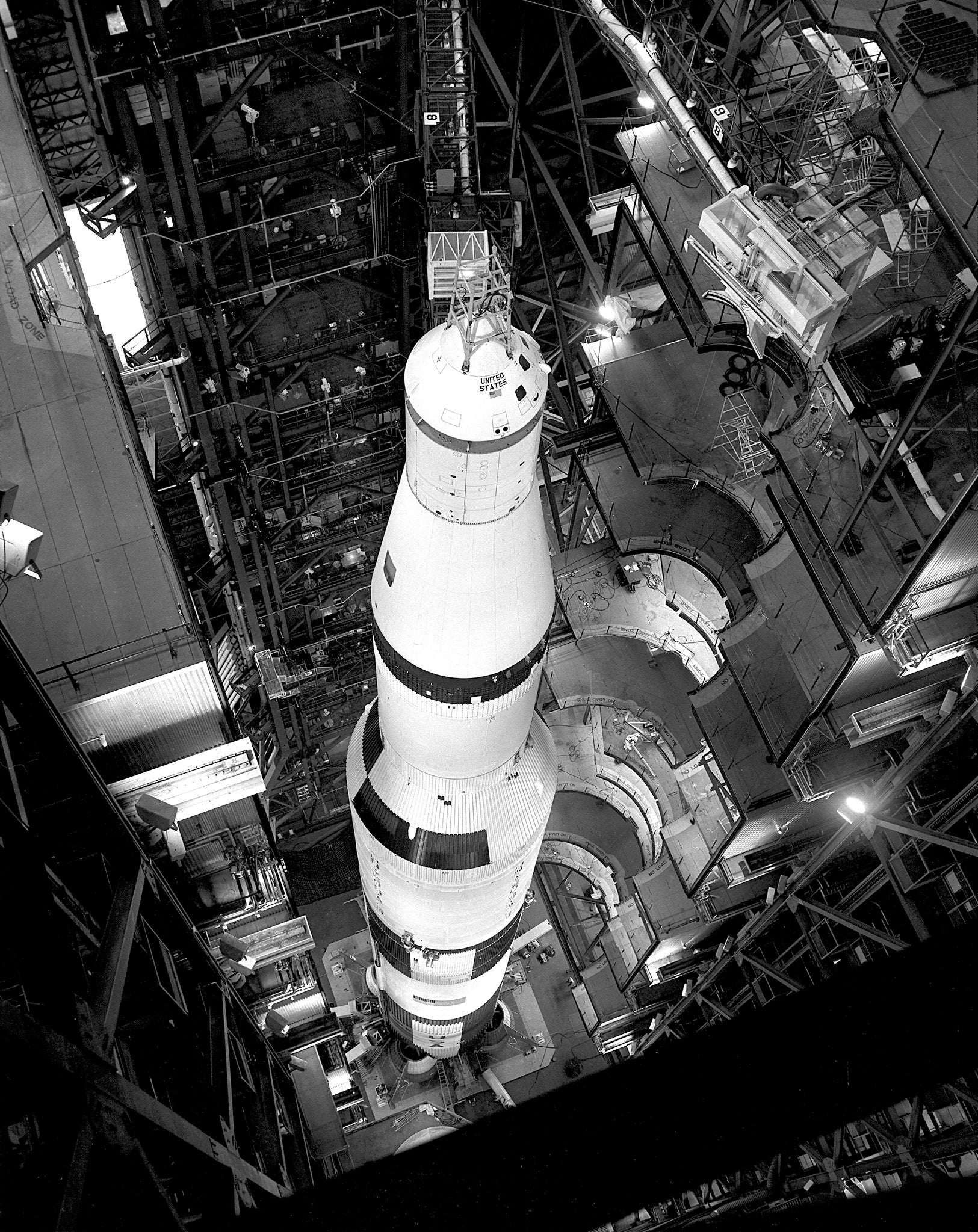
This beautiful view of a fully stacked Saturn V was taken on May 25, 1967. NASA launched its Saturn V rocket on 13 occasions from 1967 to 1975: nine for the Apollo program (including the lone Apollo-Soyuz test project) and four for the Skylab space station project. Of these launches only one went poorly, the Apollo 6 flight on April 4, 1968; two of the rocket’s first-stage engines shut down prematurely, and the third-stage engine didn’t ignite after reaching orbit. Apollo 13 was another troubled mission, but that had nothing to do with Saturn V; the mission had to be aborted after the service module’s oxygen tank ruptured.
Apollo 15 rollout
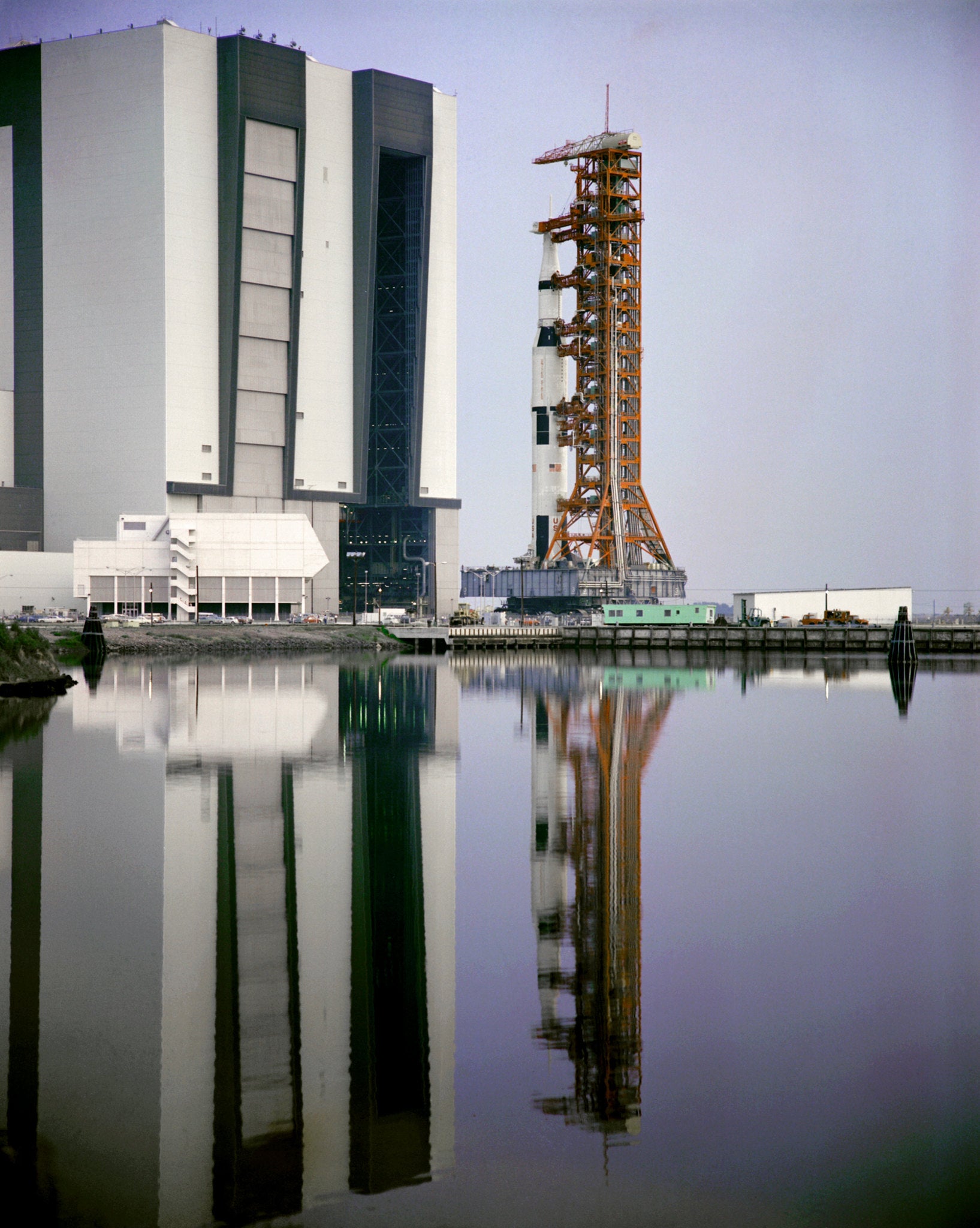
This image shows the Apollo 15 Saturn V getting wheeled out of the Vehicle Assembly Building prior to launch on July 26, 1971. In 1969, Apollo 11 became the first crewed mission to the lunar surface, and it was followed by five additional crewed landings, namely Apollo 12, 14, 15, 16, and 17. Three-stage Saturn Vs were used to launch Apollo missions, but a modified two-stage Saturn V rocket launched NASA’s Skylab Orbital Workshop in May 1973.
Rumbling to the pad
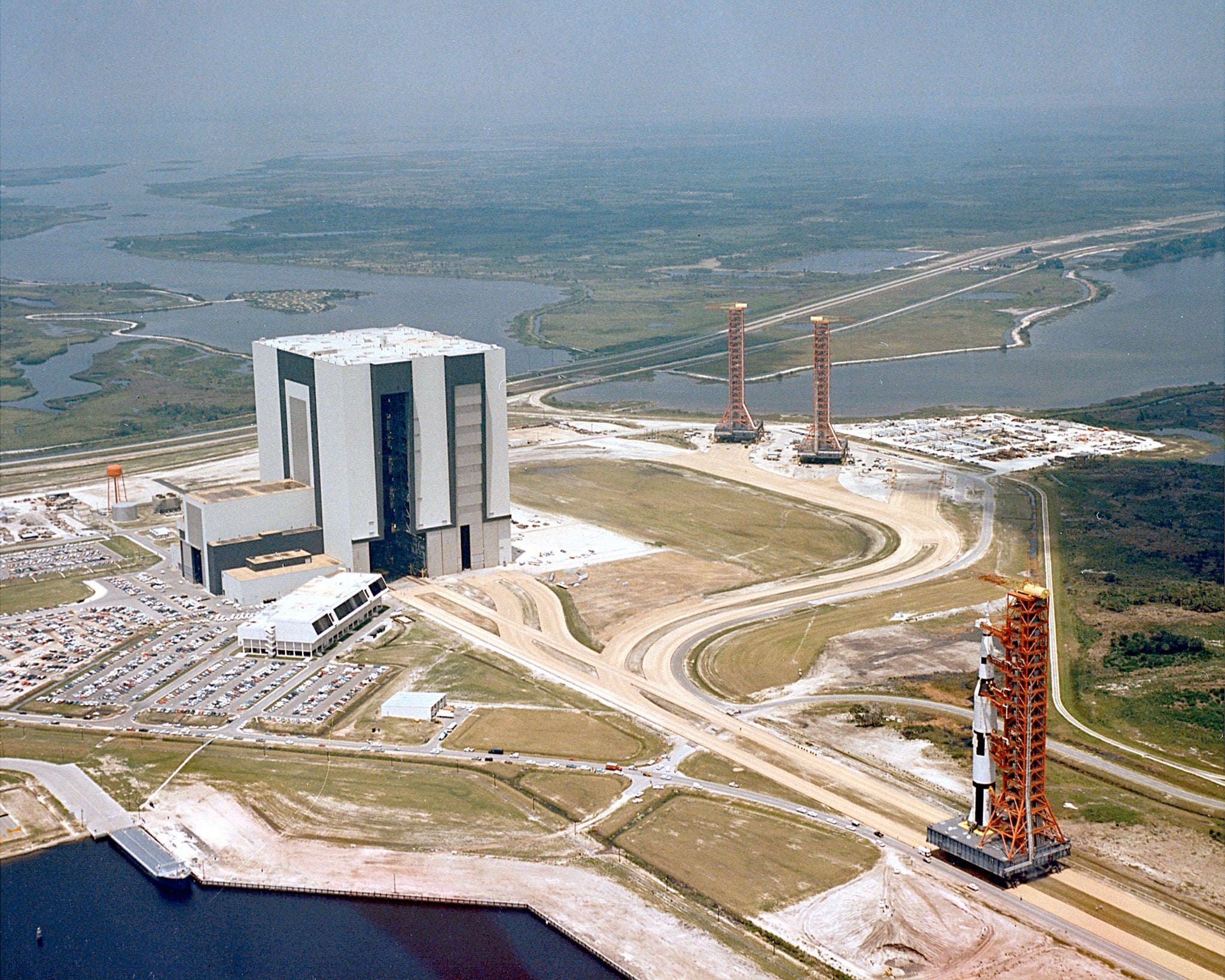
This aerial view shows a Saturn V rocket en route to Launch Complex 39A at Kennedy Space Centre. This exercise, performed on May 25, 1966, was strictly a demonstration, as this test vehicle never partook in a Moon mission. The rocket transporter moved at speeds less than one mile per hour, carrying the 12.8-million-pound rocket to the launch pad. A similar process is still used today for NASA’s SLS, the heir apparent to Saturn V.
A very big rocket
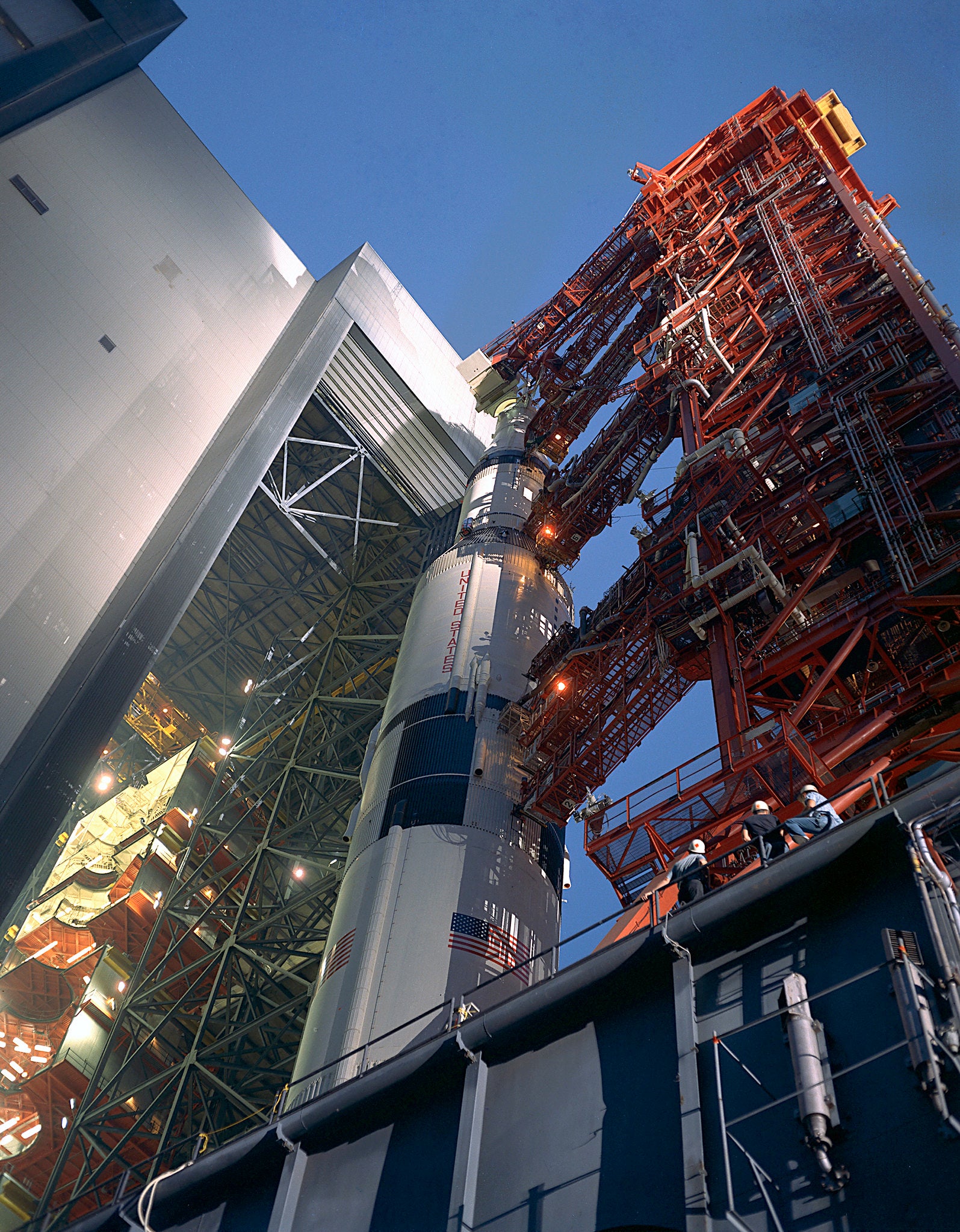
Saturn V was capable of launching about 130 tons to Earth orbit and 50 tons to the Moon. The image here, taken on September 8, 1969, shows the Apollo 12 launch vehicle departing the VAB’s High Bay 3.
The third stage
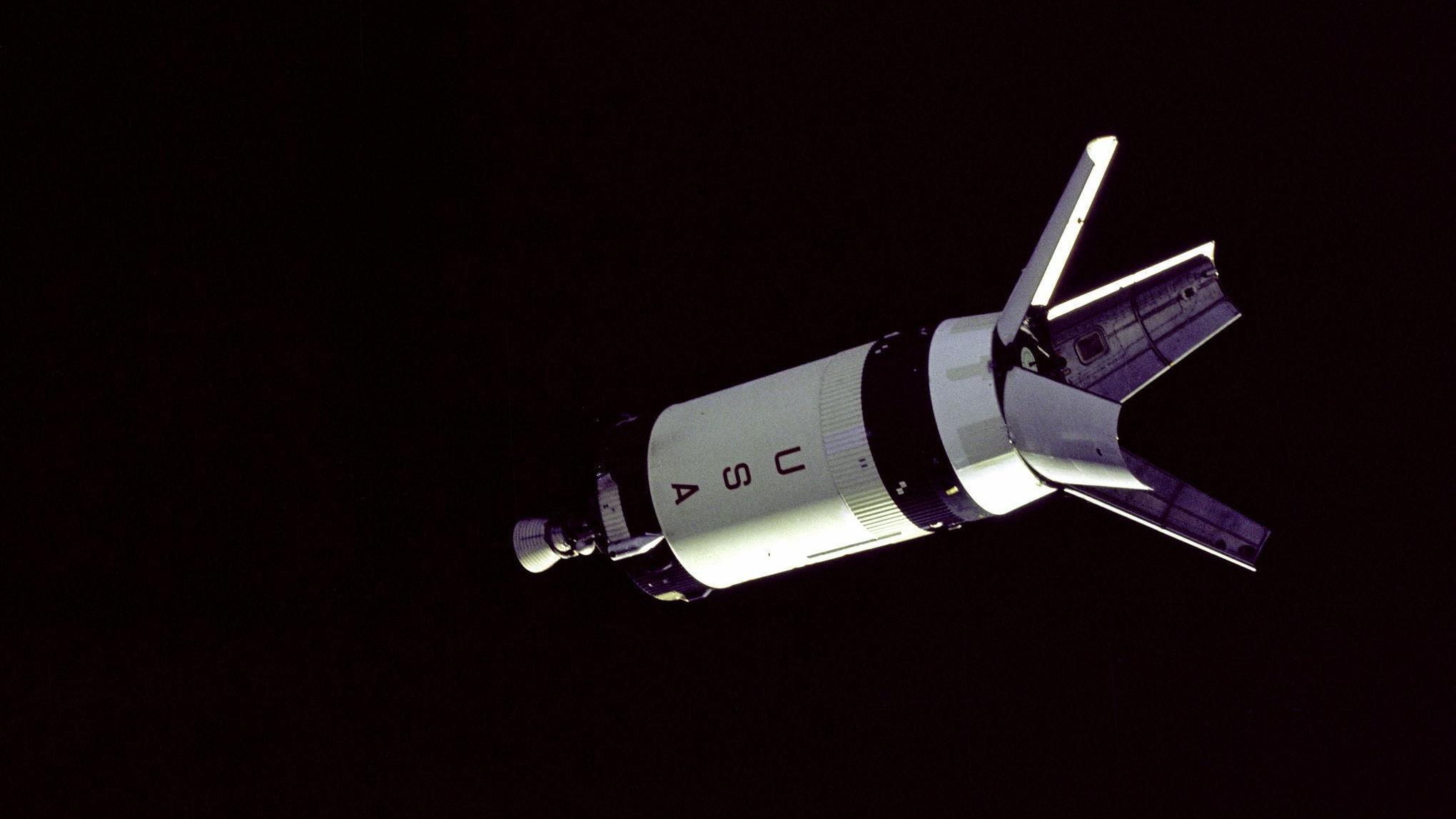
Saturn Vs also featured a third stage, known as IV-Bs, which featured a single engine that kicked in roughly 12 minutes after launch to send the Apollo crews into Earth orbit and then onto their treks toward the Moon. The image above, taken on October 11, 1968, shows the fully retracted Lunar Module Adaptor at the top of the third stage. During missions to the lunar surface, the adaptor carried the Lunar Module (LM) to space. The McDonnell Douglas Astronautics Company built the IV-Bs for NASA. Fun fact: Five third stage Saturn V boosters are still in space.
Launch Complex 39

This 1969 photo shows the Apollo 12 Saturn V at Kennedy Space Centre’s Launch Complex 39. Construction of the launch complex began shortly after the rocket’s development was approved, on December 4, 1961. Saturn Vs were built specifically for Apollo and were derived from launch vehicles developed by the U.S. Army and the C-5 rocket concept devised by Wernher von Braun.
Apollo 4 Liftoff

Saturn V performed its first flight on November 9, 1967, as pictured here. Apollo 4 was a full-scale demonstration mission, but without a crew. NASA had hoped to launch the rocket earlier in the year, but technical glitches and the Apollo 1 disaster, in which three astronauts were killed during a rehearsal on the ground, resulted in delays. NASA jumped straight to Apollo 4, skipping over Apollo 2 and 3.
Interstage separation
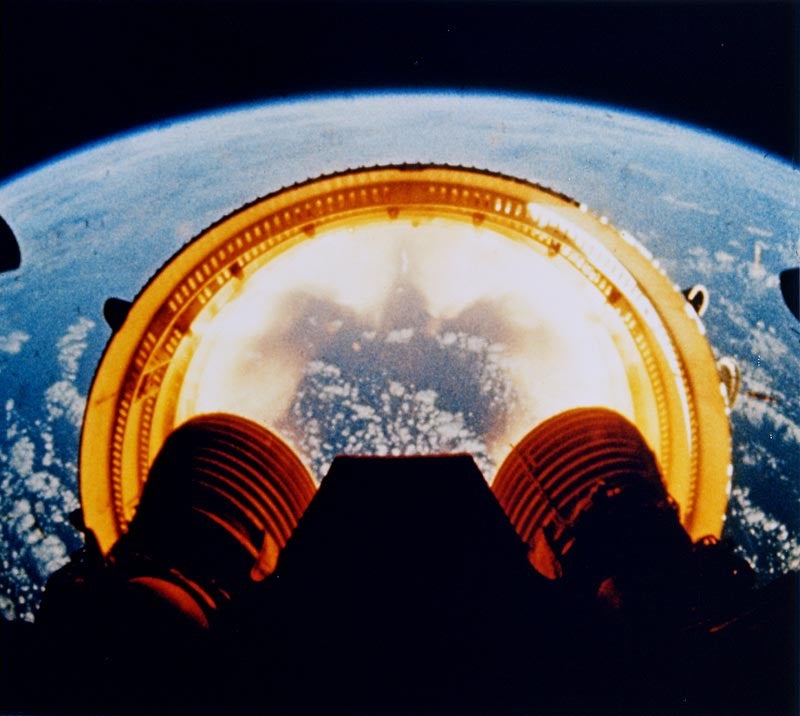
This shot, taken during Apollo 4, shows the jettisoning of the interstage section that joined the first and second stages.
To the Moon
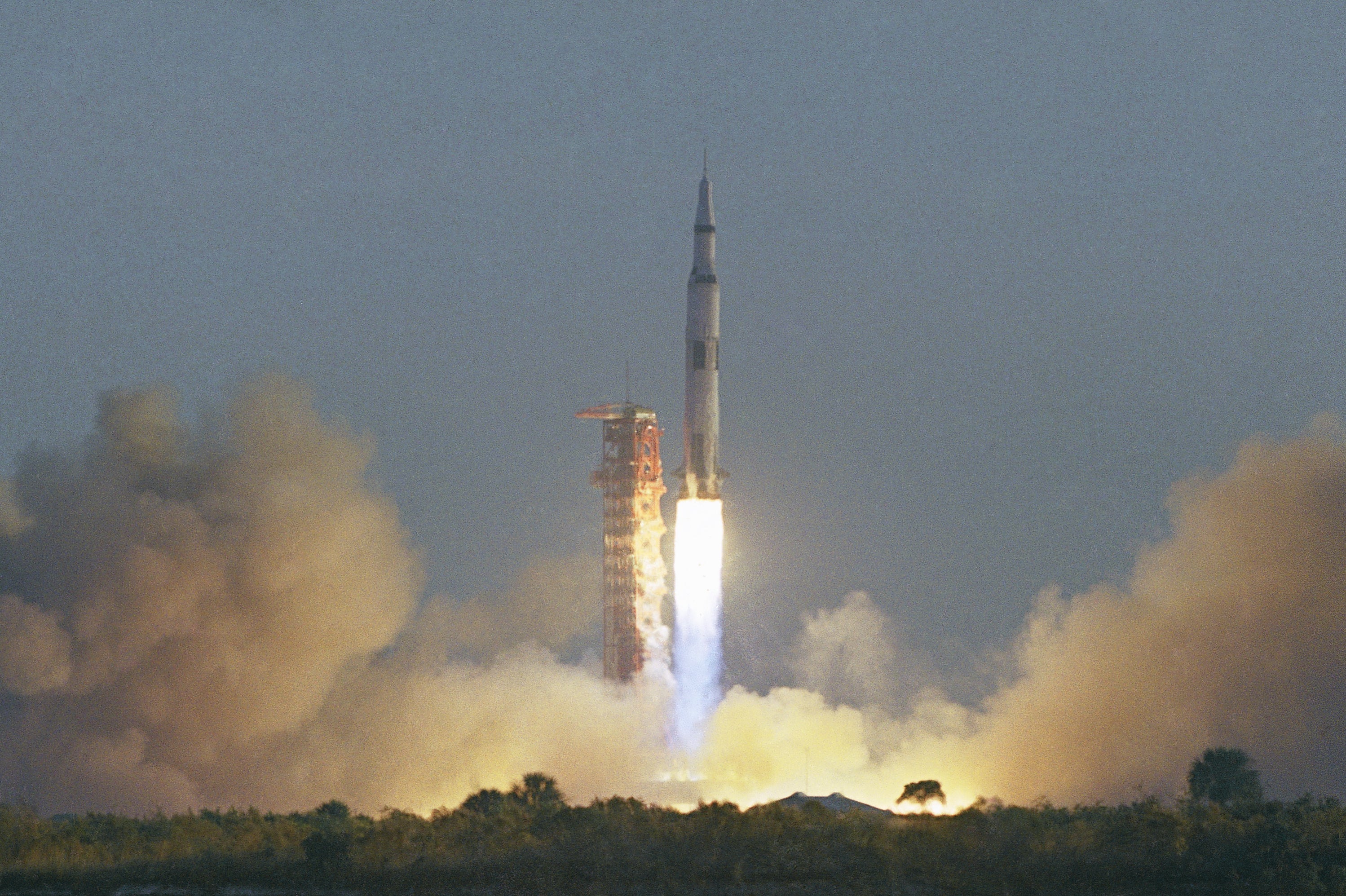
Liftoff of Apollo 8, December 21, 1968. Borman, Lovell Jr., and Anders performed 10 orbits of the Moon during the week-long mission.
Big blast

A fantastic shot of the Saturn V plume, captured during the launch of the Apollo 15 Saturn V. The camera was mounted to the mobile launcher, offering this view from 360 feet (110 meters) above the surface.
Apollo 11

Sitting atop of this Saturn V rocket is the Apollo 11 crew consisting of Neil Armstrong, Buzz Aldrin, and Michael Collins. The men blasted off on July 16, 1969, sending them on their historic mission to the Moon. The photo, captured, by a telescopic camera mounted in an Air Force plane, was taken 2.5 minutes into the mission when the rocket was 39 miles (63 km) above the surface.
To the Moon
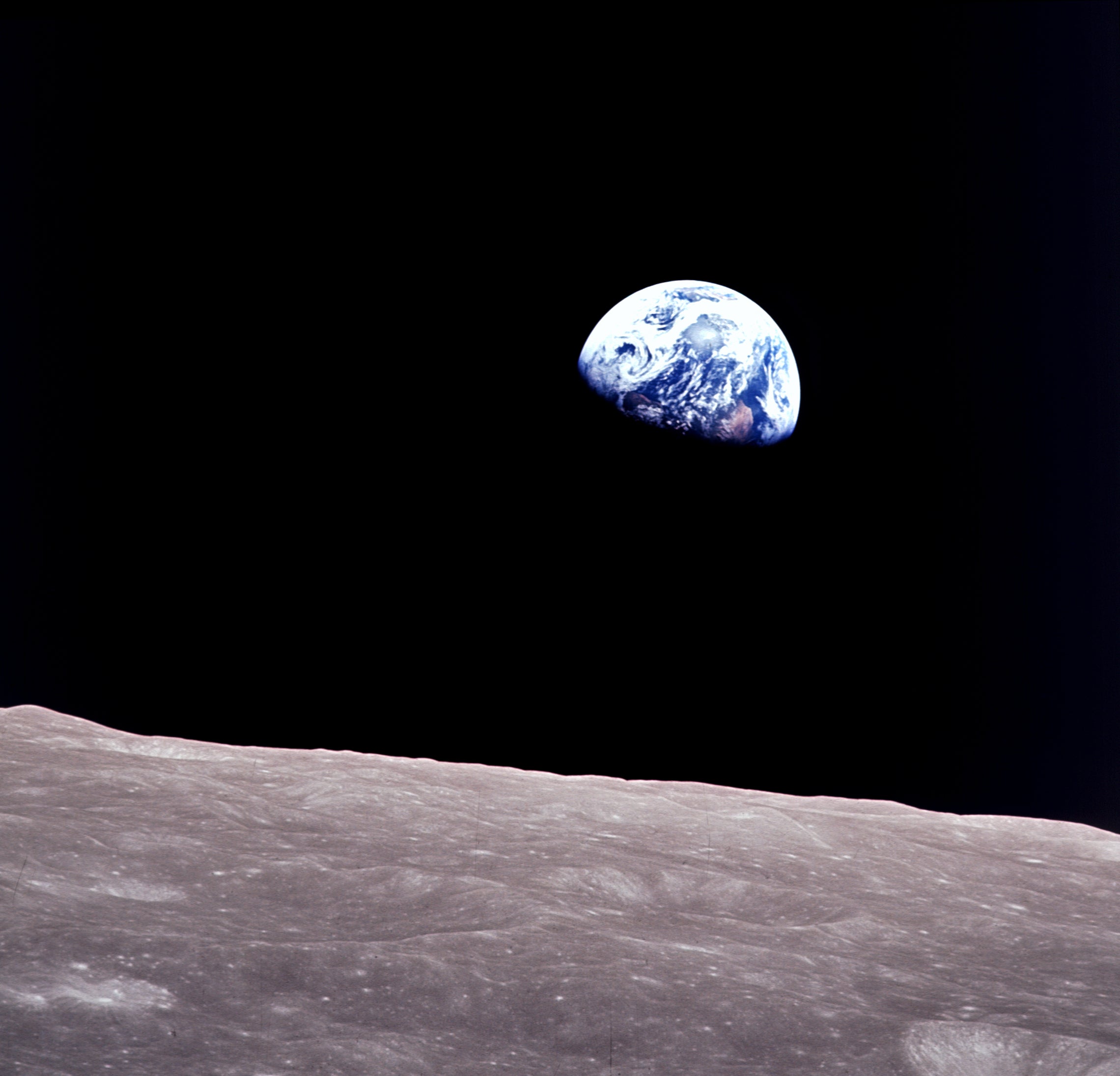
Saturn V made images like the one above, taken during Apollo 8, possible. Nasa’s SLS, with its 8.8 million pounds of thrust, is now the most powerful operational rocket in the world, as NASA once again has its sights set on the Moon. SLS might make it possible for NASA to launch crewed missions to Mars, creating an entirely new legacy.
